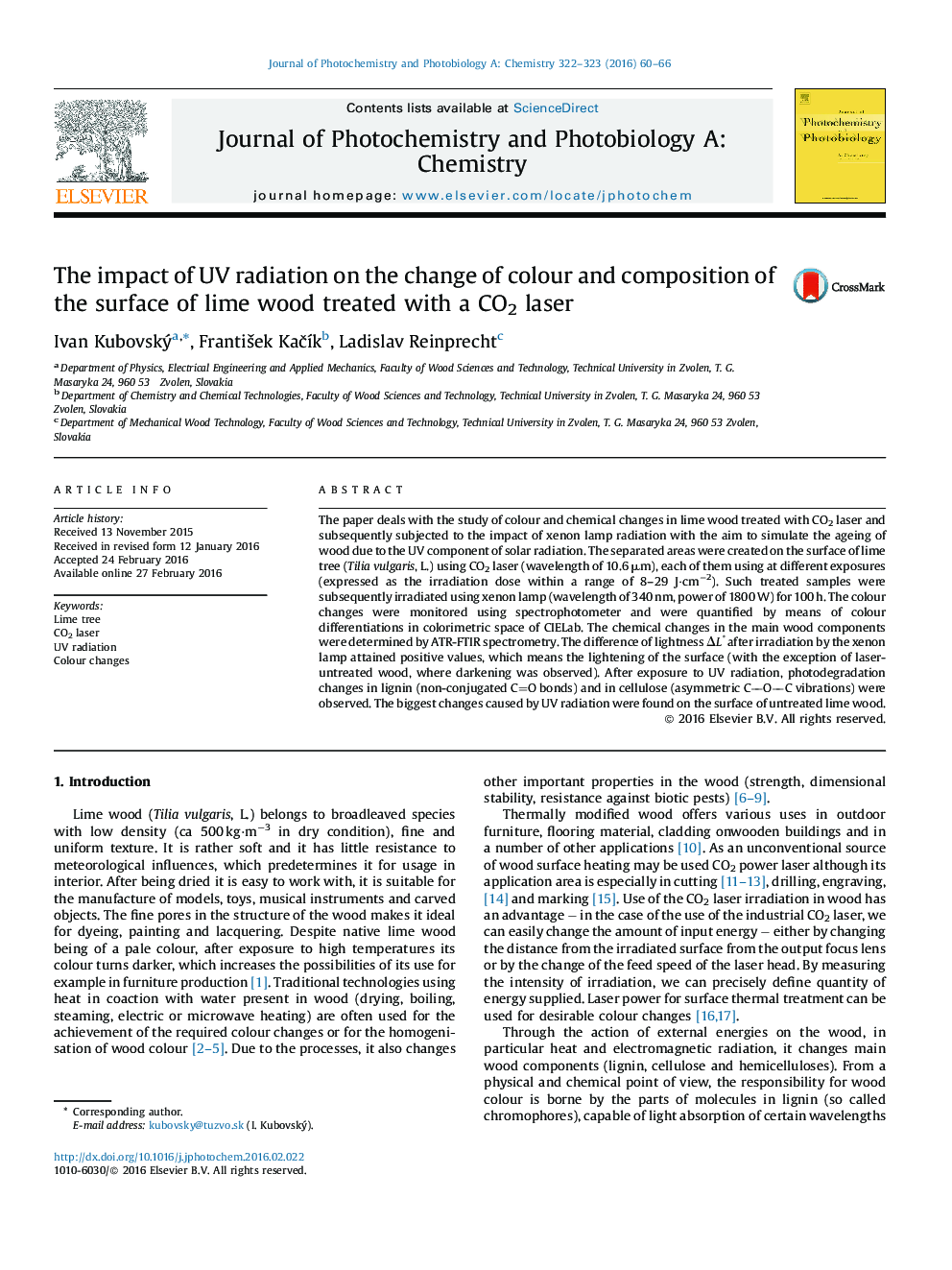| Article ID | Journal | Published Year | Pages | File Type |
|---|---|---|---|---|
| 26184 | Journal of Photochemistry and Photobiology A: Chemistry | 2016 | 7 Pages |
•We examine impact of UV radiation on the CO2 laser treated lime wood.•We examine colour and structural changes of lignin and polysaccharides.•The difference of lightness ΔL* after irradiation by the xenon tube attained positive values.•The biggest changes caused by UV radiation were found on the surface of untreated lime wood.•After exposure to UV radiation, photodegradation changes in lignin (non-conjugated CO bonds) and in cellulose (asymmetric COC vibrations) were observed.
The paper deals with the study of colour and chemical changes in lime wood treated with CO2 laser and subsequently subjected to the impact of xenon lamp radiation with the aim to simulate the ageing of wood due to the UV component of solar radiation. The separated areas were created on the surface of lime tree (Tilia vulgaris, L.) using CO2 laser (wavelength of 10.6 μm), each of them using at different exposures (expressed as the irradiation dose within a range of 8–29 J·cm−2). Such treated samples were subsequently irradiated using xenon lamp (wavelength of 340 nm, power of 1800 W) for 100 h. The colour changes were monitored using spectrophotometer and were quantified by means of colour differentiations in colorimetric space of CIELab. The chemical changes in the main wood components were determined by ATR-FTIR spectrometry. The difference of lightness ΔL* after irradiation by the xenon lamp attained positive values, which means the lightening of the surface (with the exception of laser-untreated wood, where darkening was observed). After exposure to UV radiation, photodegradation changes in lignin (non-conjugated CO bonds) and in cellulose (asymmetric COC vibrations) were observed. The biggest changes caused by UV radiation were found on the surface of untreated lime wood.
